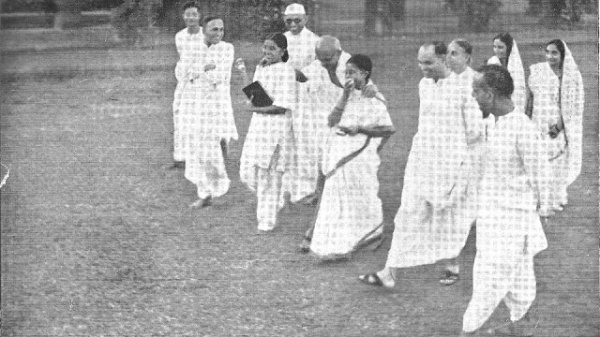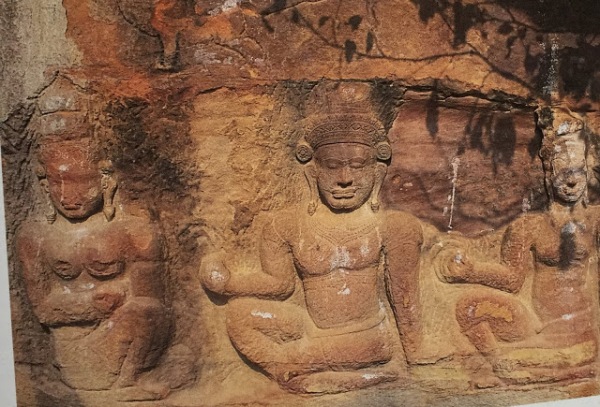
Written by London Swaminathan
Date: 31 May 2018
Time uploaded in London – 20-46
Post No. 5064
Pictures shown here are taken from various sources such as Facebook friends, Books, Google and newspapers; thanks. Pictures may be subject to copyright laws.
WARNING: PLEASE SHARE MY ARTICLES; BUT DON’T SHARE IT WITHOUT AUTHOR’S NAME AND THE BLOG NAME. BE HONEST; OTHERS WILL BE HONEST WITH YOU
பாண்டிய இளவரசிகள் சென்ற கப்பல் கவிழ்ந்த போது! (Post No.5064)
பழங்கால இந்தியாவில் கடல் வாணிபம் எப்படி நடந்தது என்ற சுவையான தகவல்களை பழைய நூல்கள் தருகின்றன. பரஞ்சோதி முனிவர் இயற்றிய திருவிளையாடல் புராணத்தில் பாண்டிய இளவரசி மீனாட்சியையும் சூர சேனப் பெண்மணி காஞ்சன மாலையையும் தொடர்பு
படுத்திப் பேசுவதைக் காணலாம்; சூரசேனர் என்பது வட இந்தியப் பகுதியில் வாழ்ந்த மக்கள். துவாரகை (குஜராத்) முதல்- மதுரா வரை ( உத்தரப் பிரதேசம்) ஆண்ட இனம். இதை புராணம் என்று ஒதுக்கிவிடலாம். பிற்கால நூல்களிலும் இத்தகைய தொடர்பு நீடித்து வந்தது சமண மத நூல்களில் காணக்கிடக்கிறது.
(தெற்கிலிருந்து வடக்கே போன பிராமணர்களை அந்தந்த தேசத்தின் பெயர் சொல்லி அழைப்பர்; திராவிட தேசத்திலிருந்து சென்ற பிராஹ்மணர்களை திரவிட் (கிரிக்கெட் வீரரின் பெயர் த்ரவிட்) என்றும் பாண்டிய தேசத்திலிருந்து போன பிராஹ்மணர்களை பாண்டே, பாண்ட்யா (குஜராத்தி பிராஹ்மணர்) என்றும், தெலுங்க தேச பிராஹ்மணர்களை ‘தில்லான்’ (த்ரிலிங்க=தெலுங்க தேச) என்றும் அழைப்பர்.

ஆவஸ்யகா சூர்ணி என்ற சமண மத நூல் சில சுவையான விஷயங்களைச் சொல்கிறது:-
மதுரை நகரிலிருந்து சௌராஷ்டிரத்துக்கு வழக்கமான கப்பல் போக்குவரத்து உண்டு; மதுரை மன்னன் பாண்டுசேனனின் (பாண்டிய மன்னன்) இரண்டு மகள்கள் அந்தக் கப்பலில் சௌராஷ்டிரத்துக்கு சென்று கொண்டிருந்தனர். இடையிலே புயல் வீசி கப்பல் கவிழத் துவங்கியது. உடனே கப்பலைக் காப்பாற்ற எல்லோரும் கந்தனையும் ருத்ரனையும் (சிவன்) பிராத்தித்தார்கள் என்று ஒரு குறிப்பு இருக்கிறது.
இப்போதைய மதுரையில் கடல் கிடையாது; 60,70 மைல்களுக்கு அப்பால்தான் கடல் உண்டு. கிருஷ்ணர் இருந்த மதுராவிலும் கடல் கிடையாது. ஆக இவர்கள் சொல்லுவது கடல் கொண்ட, இரண்டாவது தமிழ்ச் சங்கம் இருந்த தென் மதுரையாகவே இருக்க வேண்டும்; பாண்டு சேனன் என்பது பாண்டிய மன்னனின் திரிபே; மேலும் அவர்கள் முருகனையும் (கந்த) சிவனையும் (ருத்ர) கும்பிட்டது தமிழர்கள் என்பதைக் காட்டுகிறது. இதற்குப் புறநானூற்றில் நக்கீரர் பாடிய பாடலே சான்று; ஒரே புற நானூற்றுப் பாடலில் சிவன், முருகன் எல்லோரையும் போற்றுகிறார் நக்கீரர்.

இந்த நூல் 16 வகை கடற்காற்றுகளைப் பற்றி பேசுகிறது. அவையாவன
1.ப்ராசீன வாத (கீழைக் காற்று)
2.உதீசீன வாத (வாடைக் காற்று)
3.தக்ஷினாத்ய வாத (தென்றல் காற்று)
4.உத்தர பௌரஸ்த்ய ( எதிர்க்காற்று)
5.சத்வசுக (எல்லாத் திசைகளிலும் வீசும் காற்று)
6.தட்சிண பூர்வ துங்கார (தென்கிழக்கில் வீசும் புயல்)
7.அபர தக்ஷிண பீஜாபா (தெ. மே. திசைக் காற்று)
8.அபர பீஜாப (மேலைக் காற்று)
9.அபரோத்தர கர்ஜப (வ.மே. திசைக் காற்று)
10.உத்தர சத்வசுக
11.தக்ஷிண சத்வசுக
12.பூர்வ துங்கார
13.தக்ஷிண பீஜாப
14.பஸ்சிம பீஜாப
- பஸ்சிம கர்ஜப
- உத்தர கர்ஜப
இவ்வளவு வகையான பிரிவினைகள் இருப்பதால் இந்துக்கள் அல்லது பொதுவில் இந்தியர்கள் கடல் வாணிபத்திலும் கப்பல் போக்குவரத்திலும் வேறு எவரையும் சார்ந்து இருக்கவில்லை என்பது வெள்ளிடை மலையென விளங்கும். பதினாறு வகைக் காற்றுகளுக்கு தனிதனி ஸம்ஸ்க்ருதப் பெயர்களைத் தந்துள்ளனர்.
இந்தியா ஒரு விவசாய நாடு; பருவக் காற்று மழை நாடு; அதனால்தான் உலக மஹா கவி காளிதாசன் ஆறு பருவ காலங்கள் பற்றி ‘ருது சம்ஹாரம்’ எனும் நூலை இயற்றினான. மேக தூதம் என்னும் காவியத்தில் மத்தியப் பிரதேச உஜ்ஜைனி நகரிலிருந்து இமயமலை வரை பருவக் காற்று அடித்துச் செல்லும் மேகத்தின் காட்சிகளைப் பாடுகிறான். மேலும் சாகுந்தல நாடகத்தில் ஏழு வகை மேகங்கள் பற்றியும் பாடுகிறான்
காளிதாசன் சாகுந்தல நாடகத்தில் வானத்திலுள்ள ஏழு வகைக் காற்று மண்டலங்கள் பற்றியும் பேசுகிறான்.
மனைவியைக் கொன்ற பிராஹ்மணன்!
‘குவலய மாலா’ என்னும் நூலில் ஒரு சுவையான சம்பவம் வருகிறது.
குவலய மாலா நூலை உத்யோதண என்பவர் கி.பி.779ல் இயற்றினார்.

ஒரு ஏழைப் பிராஹ்மணன் பிழைப்பு தேடி ஒரு கழைக் கூத்தாடி, பாணர்கள் கூட்டத்தைப் பின் தொடர்ந்து வருகிறான். அவனுடன் அவன் மனைவி, மகன்களும் வருகின்றனர். ஒரு கிராமத்தில் கழைக் கூத்தாடிகள் கூடாரம் அடித்துத் தங்கி வித்தைகளைச் செய்து காட்டினர். அவன் மனைவியும் ஆசையோடு அதைப் பார்க்க வந்தாள். அவன் ஆத்திர ப்பட்டு அவளைத் தவறாக நினைத்து கொன்று விடுகிறான். பின்னர் ஆத்திரத்தில் அறிவு கெட்டுப் போய்விட்டேனே என்று அழுது புரண்டு தானும் மனைவியின் சிதைத் தீயில் பாய்கிறான்.
எல்லோரும் அவனை எரியும் நெருப்பிலிருந்து மீட்டு பண்டிதர் சபைக்கு அழைத்துச் செல்கின்றனர். அவன் பாவ மன்னிப்புப் பரிகாரம் என்ன என்று கேட்ட போது எல்லோரும் வீட்டை விட்டு வெளியேறி புண்ய தலங்களுக்க்குச் சென்று தரிசிக்க வேண்டும் என்று சொன்னார்கள்; அதோடு அவனிடமுள்ள கொஞ்ச நஞ்சத்தையும் தானம் செய் வேண்டும் என்றனர். (அவனும் அவ்வாறே செய்தான்)
இது போன்று கழைக் கூத்தாடிகள் கிராம ,கிராமமாகச் சென்று வியாபாரம் செய்தது முதலிய பல செய்திகள் அக்காலத்தின் போக்குவரத்து வசதிகளைக் காட்டுகின்றது.
சுபம்—










































